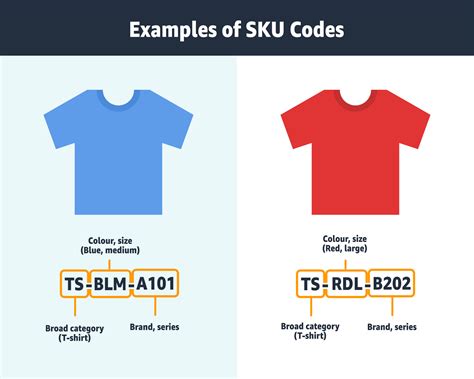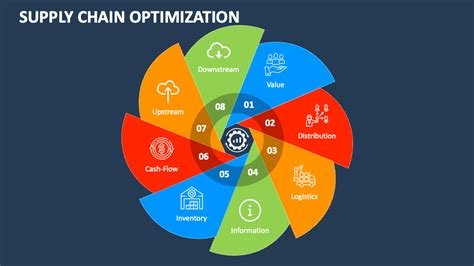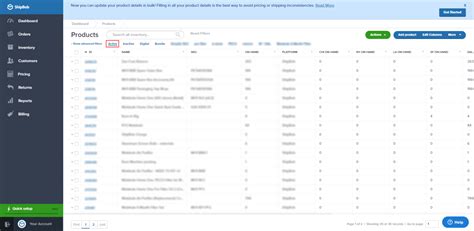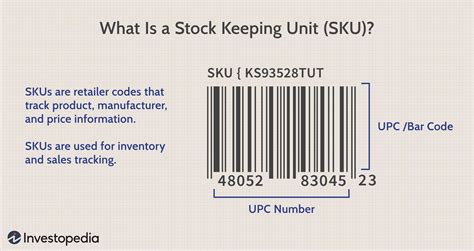Intro
Discover what a SKU is, and learn about stock-keeping units, inventory management, and product identification, optimizing ecommerce and retail operations with unique identifiers.
The concept of a Stock Keeping Unit, or SKU, is crucial in the world of retail and inventory management. It serves as a unique identifier for each product or service offered by a company, allowing for efficient tracking, management, and analysis of inventory levels. In essence, a SKU is a distinct code assigned to a specific product or variant, enabling businesses to differentiate between similar items and make informed decisions about their stock.
The importance of SKUs cannot be overstated, as they play a vital role in maintaining accurate inventory records, streamlining supply chain operations, and improving customer satisfaction. By utilizing SKUs, companies can quickly identify which products are in high demand, which ones are nearing depletion, and where adjustments need to be made to optimize their inventory levels. This, in turn, enables businesses to respond promptly to changing market conditions, minimize stockouts, and maximize profitability.
As we delve deeper into the world of SKUs, it becomes clear that their significance extends far beyond simple inventory management. They are, in fact, a critical component of a company's overall business strategy, influencing everything from pricing and promotions to product development and customer engagement. By understanding the intricacies of SKUs and their applications, businesses can unlock new opportunities for growth, improve operational efficiency, and establish a competitive edge in their respective markets.
Understanding Sku

To truly grasp the concept of a SKU, it's essential to break down its components and explore how they contribute to the overall functionality of inventory management systems. A typical SKU consists of a combination of letters and numbers that uniquely identify a product, taking into account factors such as size, color, material, and style. This unique identifier enables companies to distinguish between similar products, track inventory levels, and analyze sales data.
For instance, a clothing retailer might assign the SKU "SHIRT-RED-M" to a red, medium-sized shirt. This code would be used to track the inventory levels of that specific product, allowing the retailer to monitor sales, replenish stock, and make informed decisions about future production runs. By utilizing SKUs in this manner, businesses can maintain accurate records, reduce errors, and improve their overall operational efficiency.
Benefits Of Sku
The benefits of using SKUs are numerous and far-reaching, with implications for various aspects of a company's operations. Some of the most significant advantages of implementing a SKU system include:- Improved inventory accuracy: By assigning unique identifiers to each product, businesses can ensure that their inventory records are accurate and up-to-date.
- Enhanced supply chain efficiency: SKUs enable companies to track products throughout the supply chain, from manufacturing to delivery, and make adjustments as needed to optimize logistics and shipping.
- Better decision-making: By analyzing sales data and inventory levels, businesses can make informed decisions about product development, pricing, and promotions.
- Increased customer satisfaction: By ensuring that products are available when customers need them, companies can improve customer satisfaction and loyalty.
How Sku Works

The process of creating and implementing a SKU system involves several key steps, including:
- Product categorization: Companies must categorize their products into distinct groups, taking into account factors such as size, color, material, and style.
- Unique identifier creation: A unique identifier, or SKU, is created for each product, using a combination of letters and numbers.
- Inventory tracking: The SKU is used to track inventory levels, monitor sales, and analyze data.
- Supply chain integration: The SKU system is integrated into the supply chain, enabling companies to track products from manufacturing to delivery.
- Data analysis: Sales data and inventory levels are analyzed to inform decisions about product development, pricing, and promotions.
By following these steps, businesses can establish an effective SKU system that streamlines inventory management, improves supply chain efficiency, and drives growth.
Types Of Sku
There are several types of SKUs, each with its own unique characteristics and applications. Some of the most common types of SKUs include:- Product SKUs: These are used to identify individual products, taking into account factors such as size, color, material, and style.
- Variant SKUs: These are used to identify different variants of a product, such as different sizes or colors.
- Bundle SKUs: These are used to identify bundles of products, such as a bundle of related items.
- Service SKUs: These are used to identify services, such as consulting or maintenance services.
Each type of SKU serves a specific purpose, enabling businesses to manage their inventory, track sales, and analyze data with precision.
Best Practices For Sku

To maximize the effectiveness of a SKU system, businesses should adhere to best practices, including:
- Using a consistent naming convention: This ensures that SKUs are easy to understand and use.
- Avoiding duplication: This prevents errors and ensures that each product has a unique identifier.
- Keeping SKUs concise: This makes them easier to use and remember.
- Using a combination of letters and numbers: This provides a unique identifier that is easy to distinguish from other SKUs.
- Regularly reviewing and updating SKUs: This ensures that the system remains accurate and effective.
By following these best practices, companies can establish a robust SKU system that drives growth, improves operational efficiency, and enhances customer satisfaction.
Common Sku Mistakes
Despite the importance of SKUs, many businesses make mistakes when implementing and managing their SKU systems. Some of the most common mistakes include:- Inconsistency: Failing to use a consistent naming convention can lead to confusion and errors.
- Duplication: Assigning the same SKU to multiple products can cause inventory discrepancies and other issues.
- Complexity: Using SKUs that are too long or complex can make them difficult to use and remember.
- Lack of review: Failing to regularly review and update SKUs can lead to inaccuracies and inefficiencies.
By being aware of these common mistakes, businesses can take steps to avoid them and establish an effective SKU system that drives growth and improves operational efficiency.
Sku Management

Effective SKU management is critical to the success of any business that uses a SKU system. This involves regularly reviewing and updating SKUs, ensuring that they are accurate and consistent, and using them to inform decisions about inventory management, supply chain optimization, and product development.
Some of the key components of SKU management include:
- SKU creation: This involves assigning unique identifiers to each product, taking into account factors such as size, color, material, and style.
- SKU maintenance: This involves regularly reviewing and updating SKUs to ensure that they are accurate and consistent.
- SKU analysis: This involves using SKUs to analyze sales data, inventory levels, and other key metrics, and making informed decisions about product development, pricing, and promotions.
By prioritizing SKU management, businesses can ensure that their SKU system is effective, efficient, and drives growth.
Sku Software
There are many software solutions available that can help businesses manage their SKUs, including:- Inventory management software: This type of software enables companies to track inventory levels, monitor sales, and analyze data.
- Supply chain management software: This type of software enables companies to track products throughout the supply chain, from manufacturing to delivery.
- Product information management software: This type of software enables companies to manage product data, including SKUs, descriptions, and images.
By using SKU software, businesses can streamline their inventory management, improve supply chain efficiency, and drive growth.
Sku Examples

To illustrate the concept of SKUs, let's consider a few examples:
- A clothing retailer might use the SKU "SHIRT-RED-M" to identify a red, medium-sized shirt.
- A electronics retailer might use the SKU "TV-4K-55" to identify a 55-inch 4K TV.
- A food retailer might use the SKU "APPLES-GRANNY-5" to identify a 5-pound bag of Granny Smith apples.
These examples demonstrate how SKUs can be used to uniquely identify products, taking into account factors such as size, color, material, and style.
Sku FAQs
Here are some frequently asked questions about SKUs:- What is a SKU? A SKU is a unique identifier assigned to a product or service.
- Why are SKUs important? SKUs are important because they enable businesses to track inventory levels, monitor sales, and analyze data.
- How do I create a SKU? To create a SKU, you should assign a unique identifier to each product, taking into account factors such as size, color, material, and style.
By understanding the answers to these questions, businesses can establish an effective SKU system that drives growth and improves operational efficiency.
Sku Image Gallery









What is a SKU?
+A SKU is a unique identifier assigned to a product or service.
Why are SKUs important?
+SKUs are important because they enable businesses to track inventory levels, monitor sales, and analyze data.
How do I create a SKU?
+To create a SKU, you should assign a unique identifier to each product, taking into account factors such as size, color, material, and style.
In conclusion, the concept of a SKU is a vital component of inventory management and supply chain optimization. By understanding the importance of SKUs, businesses can establish an effective system that drives growth, improves operational efficiency, and enhances customer satisfaction. Whether you're a seasoned retailer or just starting out, implementing a SKU system can have a significant impact on your bottom line. So why not start exploring the world of SKUs today and discover the benefits for yourself? Share your thoughts and experiences with SKUs in the comments below, and don't forget to share this article with others who may be interested in learning more about this critical aspect of business operations.
